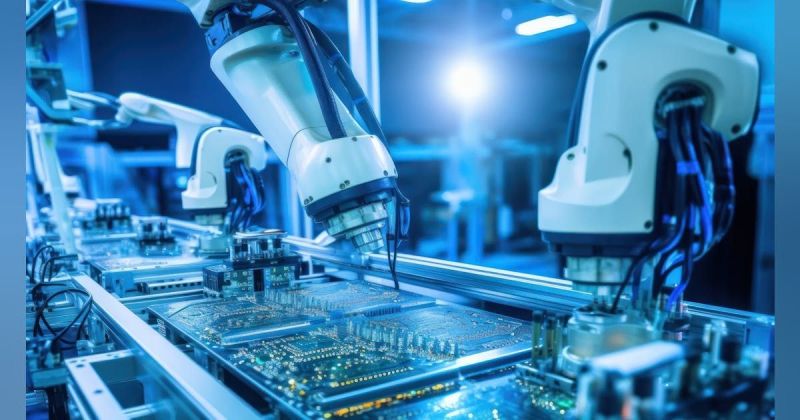In today’s fast-paced manufacturing world, ensuring product quality is more crucial than ever. One of the most effective methods for maintaining high standards is visual defect spotting with stroboscope. This technique has revolutionized the quality control process, offering unparalleled precision and efficiency.
The stroboscope, an instrument that produces regular flashes of light, allows for the detailed examination of moving objects, making it an essential tool in various industries. Let’s delve deeper into how this fascinating technology is transforming quality inspection.

Understanding the Basics of Stroboscopic Technology
A stroboscope works by emitting flashes of light at specific intervals. When synchronized with the motion of an object, it can create the illusion of a stationary or slow-moving object. This effect is incredibly useful for identifying defects that might be missed during routine inspections.
The Science Behind Stroboscopes
The principle behind stroboscopes is based on the phenomenon known as persistence of vision. By carefully timing the flashes, inspectors can ‘freeze’ the motion, allowing them to spot imperfections that would otherwise go undetected. For further reading on how stroboscopes work, you can visit Mextechin’s detailed guide.
Applications Across Industries
Stroboscopes are versatile tools used across various industries, from automotive to printing. In the automotive sector, for instance, they play a critical role in testing automotive parts. They help detect anomalies in rotating or reciprocating parts, ensuring that vehicles meet safety and performance standards.
Benefits of Using Stroboscopes for Defect Spotting
The advantages of using stroboscopes for defect detection are numerous. They enhance the accuracy of inspections and reduce the time needed to identify problems. Moreover, they help minimize downtime, saving both time and money.
Improved Accuracy
By providing a clear view of defects, stroboscopes enhance the accuracy of inspections. This precision is particularly beneficial in industries where safety is paramount.
Time Efficiency
Stroboscopes allow for rapid inspections, significantly reducing the time required to spot defects. This efficiency translates into increased productivity and reduced operational costs. Learn more about how they help reduce downtime.
Challenges and Considerations
While stroboscopes offer numerous benefits, there are challenges to consider. Proper setup and calibration are critical to ensure accurate results. Furthermore, inspectors must be trained to interpret the images correctly.
Calibration and Setup
To achieve optimal results, stroboscopes must be precisely calibrated. This task requires a thorough understanding of the equipment and the process being inspected.
Training and Expertise
Inspectors must undergo training to effectively use stroboscopes. They must be skilled in both operating the equipment and interpreting the results. For a comprehensive overview of stroboscopic applications, Checkline offers an excellent resource here.
Future of Visual Defect Spotting with Stroboscopes
The future looks promising for stroboscopic technology. As industries continue to prioritize quality, the demand for innovative inspection methods like stroboscopes will likely increase.
Technological Advancements
Advancements in technology are continually enhancing the capabilities of stroboscopes. Innovations in digital imaging and automation are expected to further improve their effectiveness.
Increased Adoption Across Industries
As awareness of their benefits grows, more industries are likely to adopt stroboscopes for quality inspection. This trend will contribute to higher standards of product quality worldwide.
Conclusion: Embracing the Power of Stroboscopes
In conclusion, the use of stroboscopes in visual defect spotting is a transformative approach to quality control. By enabling precise and efficient inspections, stroboscopes help ensure that products meet the highest standards. As technology continues to evolve, we can expect even greater innovations in this field.

FAQ
What is a stroboscope used for?
A stroboscope is used to observe the motion of fast-moving objects by creating the illusion of them being stationary, allowing for detailed inspections.
How does a stroboscope improve quality inspection?
By providing a clear view of defects in moving parts, stroboscopes enhance the accuracy and efficiency of quality inspections.
Which industries benefit from stroboscopic inspections?
Industries such as automotive, printing, and manufacturing benefit significantly from stroboscopic inspections due to their need for precise quality control.
This article contains affiliate links. We may earn a commission at no extra cost to you.
